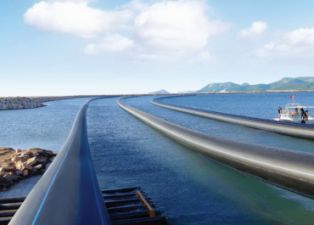 Traffic fatalities are 5 times the world average at 22,000 deaths a year: It’s time for Iranians to get on their bikes.
Traffic fatalities are 5 times the world average at 22,000 deaths a year: It’s time for Iranians to get on their bikes.
Iran has the highest rate of traffic accident fatalities in the world – even higher than the United Arab Emirates. While car ownership rates in Iran is less than the western countries, the traffic accidents still account for an unbelievable number of victims. Knowing the stats, this is a good call to get people on their bikes and a push for public transportation. Some months ago Dr. Hassan Emami Razavi the Deputy Minister of Health in Iran said that the traffic accident fatalities of Iran is 5 times more than the world average. Cars created without air bags and seatbelts, poor driver education, young drivers, and delapidated roads are to blame. At present, the fatality rate is about 20,000 people annually. In 2002, 44 deaths occurred for every 100,000 people. The same factor in the same year for Germany and Canada were 9 and 6 respectively. In 2008, it was 12.25 for the United States. Last year, the media focused on the issue and announced that car accident fatalities of Iran is 25 times more than Japan and 2 times more than Turkey, which has similar cultural conditions to Iran.
Researchers and the media usually try to consider the problem and give reasons. There is a list of them.
Generally the reasons are related to humans, the cars themselves, and the conditions on the road. The accidents that are related to human factors can include the accidents that are caused by human mistakes when driving or passing the street, or social and cultural aspects like obeying the driving regulations.
For example, how people use seat belts is one of these issues. In the past few years, using seat belts has risen. But there are still problems with safety and helmet use by motorcycle riders. In Iran using seat belt is compulsory for the front seats but not for the back seats. That is why in June 2010, Alireza Zamani, a Parliament member, asked for making the back seat belt use compulsory to reduce fatalities.
Basically, the population of Iran is comparatively young. So some researchers raise this matter as one of the reasons for the accidents. As they say, the young people are responsible for the car accidents.
Many accidents occur because of deficiency or lack of safety facilities in the car. Producing cars with seatbelts have been obligatory for Iranian car producers since 1999. But most of the cars that were produced before that date do not have seat belts.
Similarly just 7 out of 37 types of cars which are produced in Iran have air bags and ABS brake.
The network of the roads of Iran is very old. Many accidents, which usually pile up the fatalities happen on old roads that have been built decades ago with poor road engineering standards. These kinds of roads are usually located in points far away from the main metropolitan areas or provincial centers.
Nevertheless, the statistics show that the fatality rate is dropping. In 2002 about 30,000 people died in car accidents. Now it has been reduced to 20,000. Although statistically some improvements can be seen, there is a long way to solve this multi-variable problem.
As car users and drivers, the first step we can have is to reduce accident fatalities by having in mind some primary safety hints. Read these safety hints (in Persian). And of course choosing new modes of transport such as the bus, and petitioning the government for better standards and enforcement.
More green news from Iran:
Eco Tourism in the Middle East: Iran
Iran Looks to Create Biofuel
Iran Inaugurates Its First Solar CSP Plant
Celebrate Spring and Iranian New Year
Top image via Sharif



